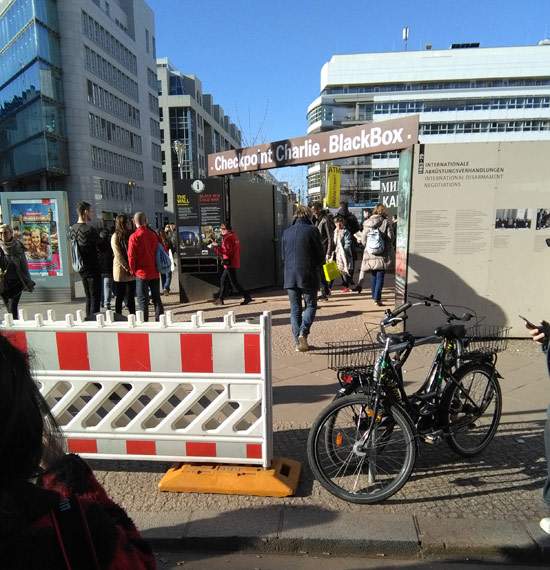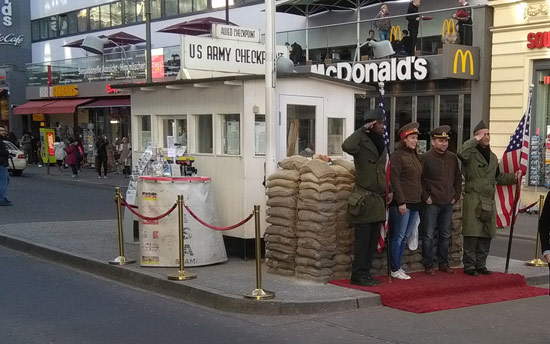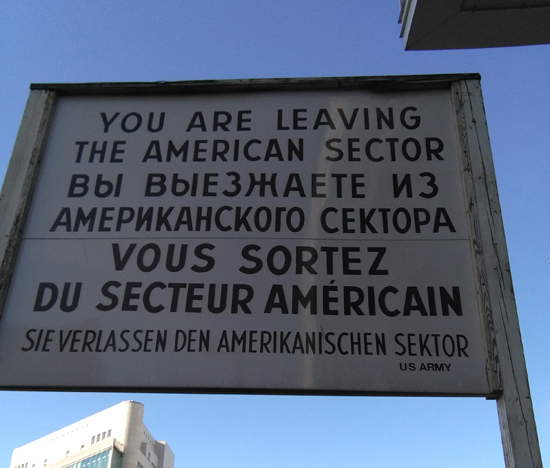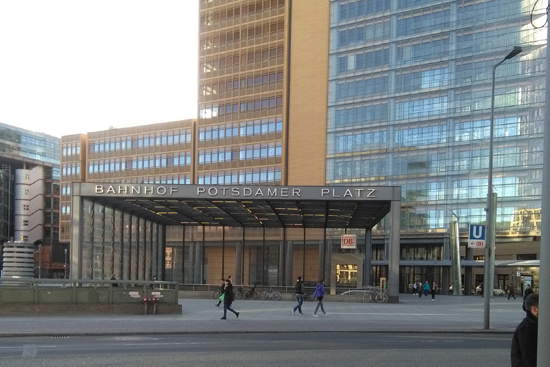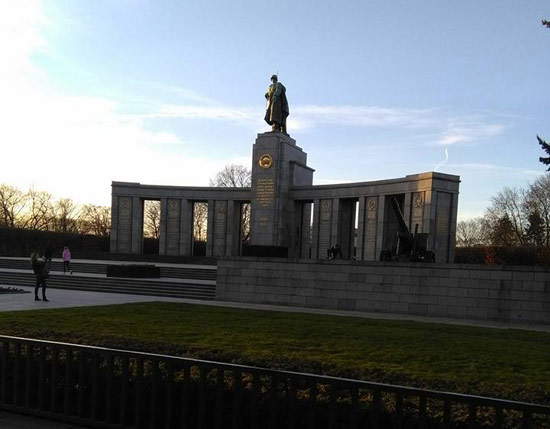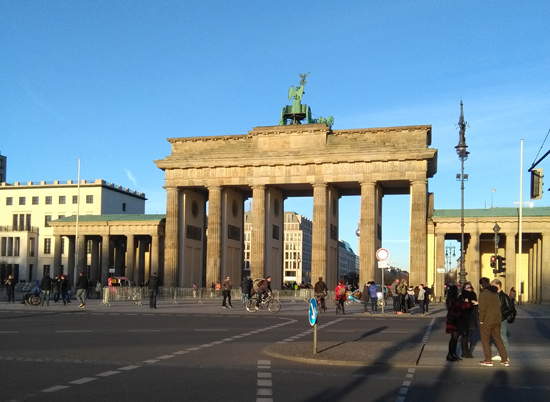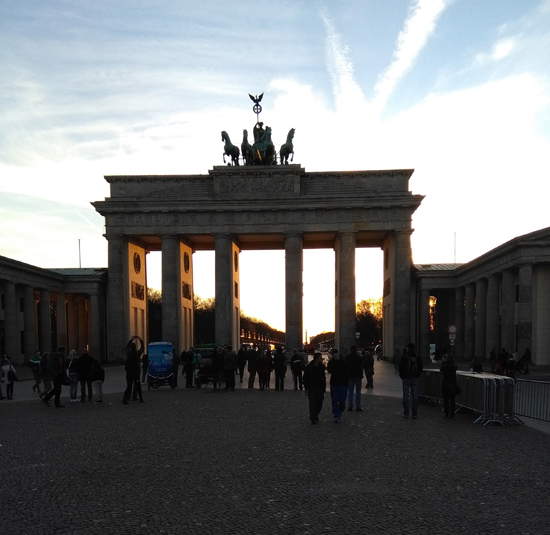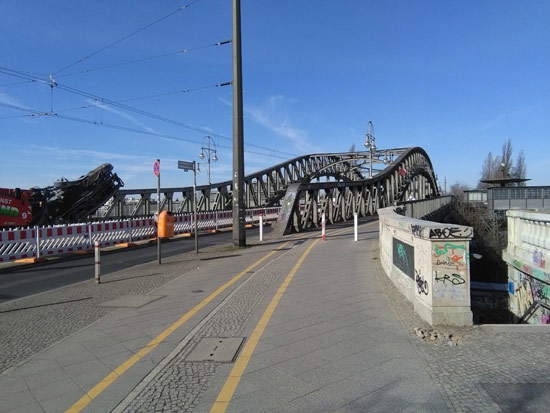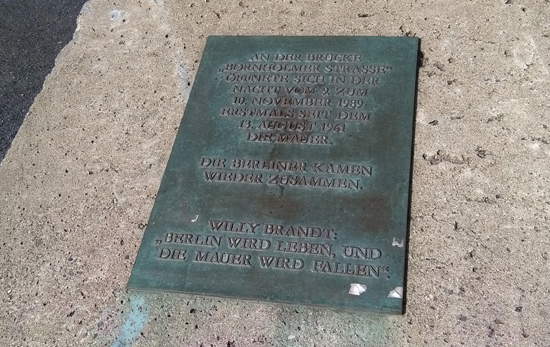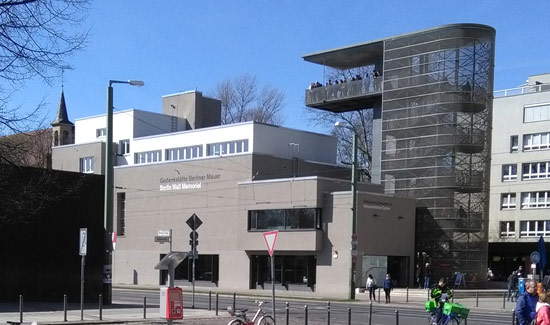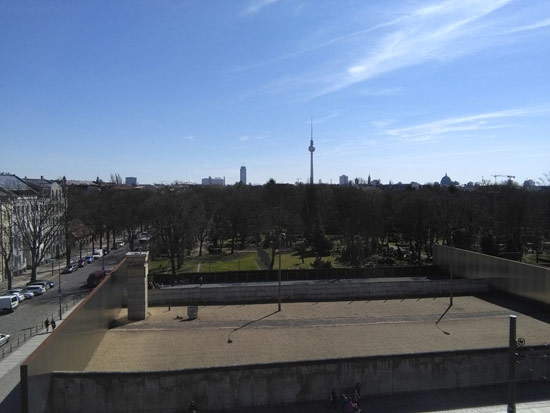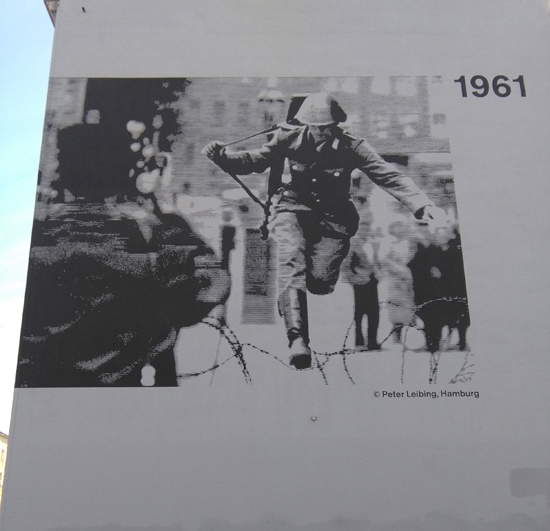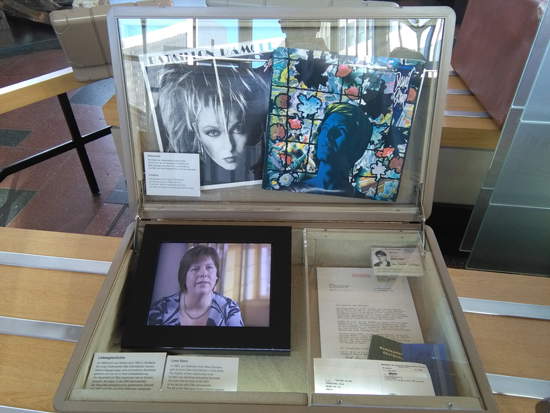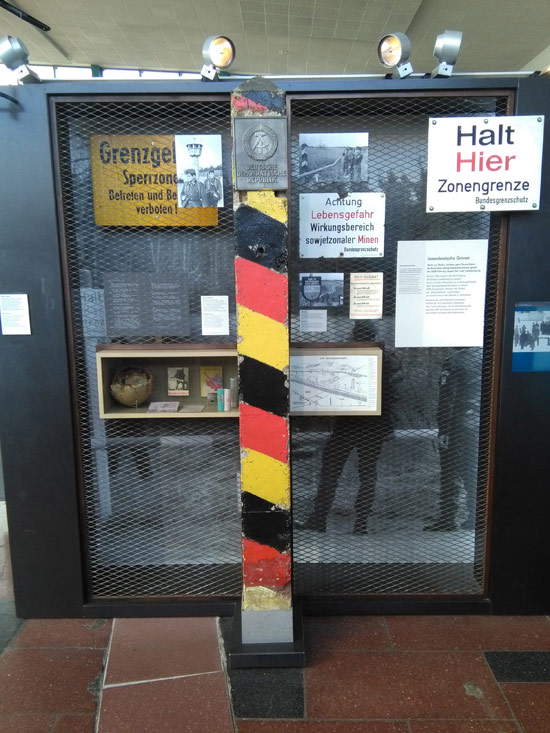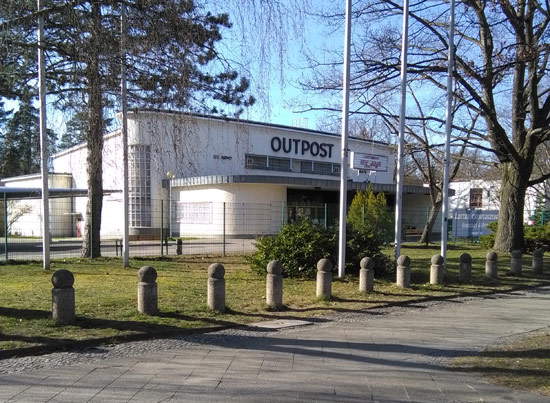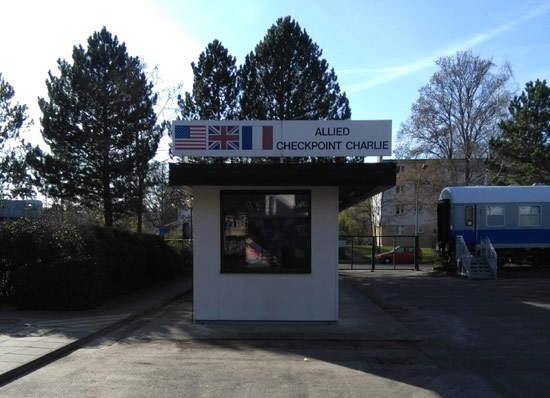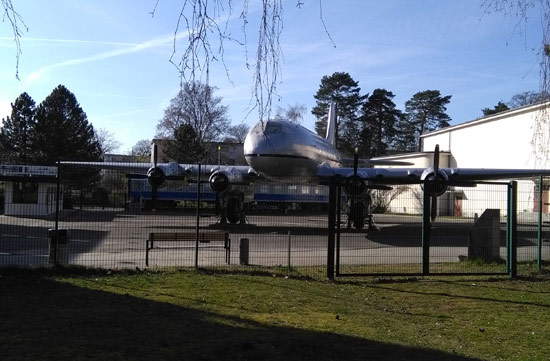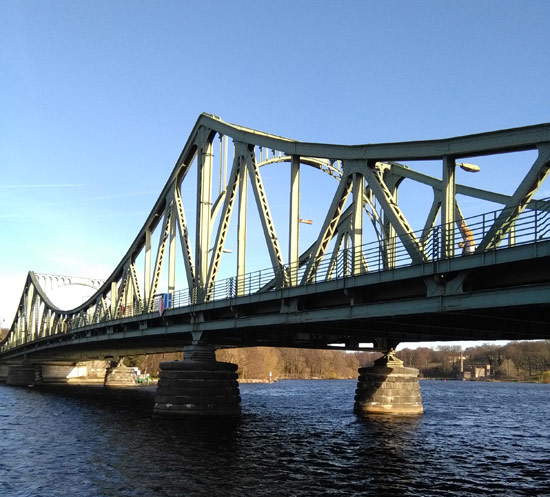by Gabriele Giannini , published on 07/04/2016
Categories: Travel
/ Disclaimer
Account of the trip to Berlin for The Bridge of Spies tour: an incredible experience in the places that marked the history of Germany divided between East and West. #thespiesbridge
On the weekend of April 1 to April 3, I had the opportunity to visit Berlin on the occasion of the release of Steven Spielberg’s film The Bridge of Spies on DVD, Blu-Ray, and in digital format (it can be found on Google Play and iTunes). The trip was an opportunity to see the places where the famous director and actors such as Tom Hanks and Mark Rylance (who, by the way, for The Bridge of Spies won the Oscar for Best Supporting Actor) shot and starred in the film based on a true story about lawyer James Donovan who was commissioned by the CIA to negotiate the exchange of a Soviet agent, Rudolf Abel, for an American soldier, Gary Powers, captured by the USSR. Being surrounded by the monuments that appear in the film, and wearing the double-breasted coat for the entire trip (in Berlin, the atmosphere is still cool at this time) gave me the feeling of really being in that tumultuous and grim era and almost reliving the feelings of the main characters in the story.
 |
| Tom Hanks and Steven Spielberg on the set of Bridge of Spies. |
The afternoon of April 1 was all about the center of Germany’s capital: the first stop was Checkpoint Charlie, an American military checkpoint on the border between East and West Berlin. It is, moreover, within walking distance of the hotel in which I stayed overnight: so with this famous testimony to the city’s past I got to familiarize myself.... ! Around Checkpoint Charlie, during the day, you can find two men in American uniforms impersonating U.S. soldiers in the same way that in Rome you can find dudes roaming the streets disguised as Roman centurions.
 |
| Near Checkpoint Charlie |
 |
| The guys dressed as soldiers at Checkpoint Charlie |
 |
| The very famous sign placed on the border |
I walked along the Mitte district (which was included in the Soviet-influenced area) to see one of the remains of the Berlin Wall, just a few meters from the German Senate: the Wall is now in tatters scattered around the city, and has metal plates attached to the sidewalks to delineate where it ran, giving the feeling of crossing an invisible wall.
Not far from here we find Potsdamer Platz, named after the city of Potsdam, as it is located where the road to that city, a little more than twenty kilometers from Berlin, is located: it is now a modern square around which rise glass buildings that, in the mid-afternoon, reflect the sunlight, giving it a bright atmosphere. The square is the site of an important railway station, the Potsdamer Bahnhof: it was the first station opened in the city, in 1838.
 |
| Remains of the Berlin Wall |
 |
| A fragment of the Wall in Potsdamer Platz |
 |
| Potsdamer Bahnhof, the station at Potsdamer Platz. |
After venturing to the Holocaust Memorial, the labyrinthine memorial to the victims of the Holocaust, I devoted the late afternoon hours to the area of the city that once fell within the Russian zone of influence. Here I observed the memorial to fallen Soviet soldiers: it almost seems as if its designers (Lew Kerbel, Vladimir Zigal and Nikolai Sergijevski) wanted to revisit the architecture of the Brandenburg Gate in a modern key, creating a sober, stark, somewhat cold and at the same time imposing monument, placing on the top a statue of a Russian soldier slinging his weapon in remembrance of those who died during World War II. The Brandenburg Gate, Berlin’s famous landmark, is just a short walk away: a five-minute stroll is enough to find yourself in front of this majestic monument, once the gateway to the city (it was commissioned by Frederick Wilhelm II, King of Prussia, and built to a design by Carl Gotthard Langhans between 1788 and 1791), which represents one of the European symbols of neoclassicism. Not far from here is also the Russian Embassy, where some of the most important scenes in the film took place. In short: between walks and reflections on Berlin’s history, it got late and it was time to restore the body! Leaving, then, the former Soviet territory, I dined with my traveling companions in a typical Bavarian restaurant, amidst frankfurters, schnietzel and pretzels (and, by the way, apparently I was the only one who wanted to try the pretzel... ) and big glasses of beer (no mugs this time).
 |
| The Holocaust Memorial |
 |
| The Soviet War Memorial |
 |
| The Brandenburg Gate |
 |
| The Brandenburg Gate as seen ... from behind |
On the morning of April 2, after seeing the Bösebrücke, the bridge along Bornholmerstrasse, I explored Bernauerstrasse, a street that was the main scene of the division between East and West Berlin, one of the greatest tragedies of 20th-century Germany: in fact, the wall ran along the street, and here, in 1961, the first casualty caused by the infamous construction was recorded. A lady, Ida Siekmann, threw herself from her apartment on Bernauerstrasse in an attempt to climb over the wall, but she did not survive: after her there were many people who sacrificed their lives trying to cross the wall. I began the tour of this street from the Nordbahnhof, a station that once straddled East and West Berlin (and for that reason closed), now a normal subway for city use that also serves as a display of photos and testimonies of the transportation of divided Berlin. The photos hanging on the walls of this subway gave an idea of how this place was strictly guarded by GDR soldiers.
 |
| The Bösebrücke |
 |
| A plaque commemorates the date of the fall of the Wall: November 9, 1989 |
Along Bernauerstrasse are houses that were literally cut off to prevent escape from East to West Berlin: the west side of these buildings, in fact, consists of a wall without windows on which, today, photographs have been painted tracing the history of the Wall (one of these is the photo of the Jumping Soldier, a famous symbol of the search for freedom by the very soldiers who had to carry out orders). The Bernauerstrasse Cemetery is flanked by the burial place of people who died from 1961 until the Berlin Wall came down in 1989. It is impossible to describe the anguish caused by the photos of these deceased people (including the young and very young) during these dark years. This street is also home to the Church of Reconciliation, a church that remained unused for two decades and was torn down because it was located in the Death Strip, the area between the wall and the barrier that was later built by the East Germans to make escapes more difficult: the sad name is due to the fact that soldiers shot anyone who ventured there. The church was later rebuilt starting in 1995 and opened in 2000. From the top of the Berlin Wall Memorial, located precisely on Bernauerstrasse, after countless tiring stairs (the elevator was not available...inefficiencies therefore seem to happen even in Germany!) one can admire the street and a part of the city, amidst the hot sun and cool wind.
 |
| The Berlin Wall Memorial |
 |
| Berlin as seen from the top of the Wall Memorial |
 |
| The photo of the soldier jumping on one of the walls of Bernauerstrasse |
 |
| The Church of Reconciliation |
After a lunch that was certainly not German (I ate at an Asian restaurant), I was taken to Friedrichstrasse to see the Palace of Tears, a former customs building post between West and East Berlin (inside it, checks were carried out on West Berliners going to and from the East: contrary motion was not allowed, and so one can easily guess why the name by which the building is known ), now a museum used to preserve the relics of that customs. After that I left for the former American zone to visit the Allied Museum, once a theater erected for the solace of U.S. soldiers, now a museum preserving American military memorabilia. Here my companions and I enjoyed taking pictures next to a replica of an airplane and saw a second Checkpoint Charlie that misled us: we were convinced that the one we had seen the day before was the original Checkpoint, but upon further investigation, we found that the historic one is now in the museum (it is the cabin that used to be at the checkpoint: today it is part of the museum’s exhibit).
 |
| The Palace of Tears |
 |
| Memories testifying to a love between two young people, he from West Berlin and she from East Berlin, through the music they listened to (interestingly, David Bowie, who lived in Berlin, talked about the wall in what is perhaps his most famous song, Heroes) |
 |
| Historical signs of the GDR preserved in the Palace of Tears |
 |
| The Allied Museum |
 |
| Checkpoint Charlie cabin in the Allied Museum |
 |
| Airplane in the Allied Museum |
Finally, at 6 p.m., with an evocative sunset as a backdrop, here my companions and I reached the Glienicker Brücke, the Bridge of Spies, the scene of several spy exchanges, the first of which was precisely the one staged by Spielberg and Hanks in their third film collaboration. Here, between attempts to take the most beautiful photos possible and interviews from Studio Aperto (who accompanied us throughout the trip to document it), we concluded the “mission” entrusted to us by 20th Century Fox. Between fascinating monuments and evocative rubble, the Berlin weekend left me and my traveling companions with a wealth of memories and sensations that only Berlin’s history can provide.
 |
| Glienicker Brücke, the Bridge of Spies |
 |
| On the Glienicker Brücke the exchange recounted in the film Bridge of Spies takes place. |
Warning: the translation into English of the original Italian article was created using automatic tools.
We undertake to review all articles, but we do not guarantee the total absence of inaccuracies in the translation due to the program. You can
find the original by clicking on the ITA button. If you find any mistake,please contact us.

